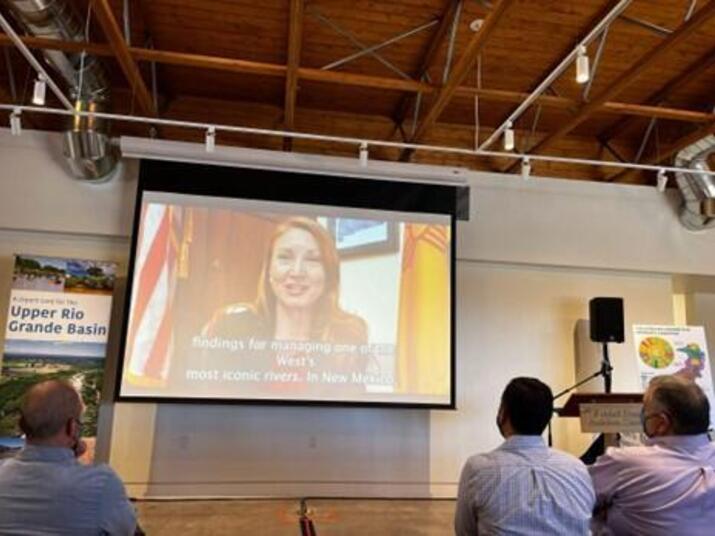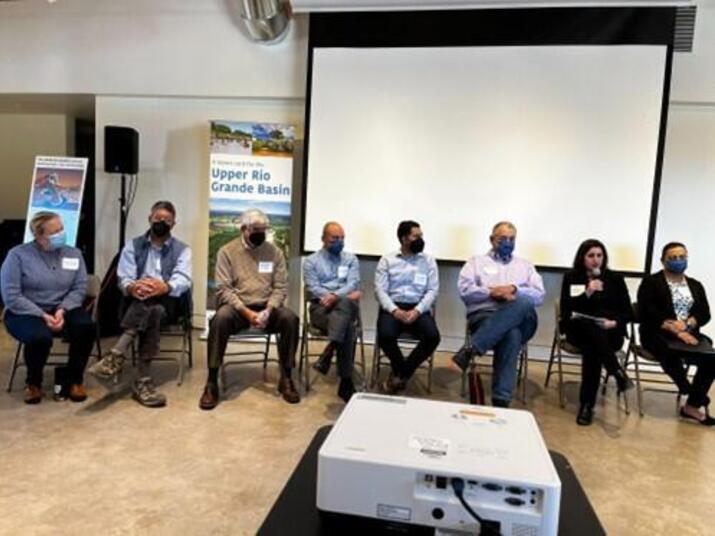
It takes a Village to Sustain a River
- Date: 01 December 2022
- Author: Enrique Prunes
The Upper Rio Grande’s first Basin Health Report Card was launched on Thursday, November 17th. The results, developed by leading ecosystem scientists and local experts to help residents and policymakers better understand the health of their local waters, are mixed: the Upper Rio Grande basin scored a “C.” There is not enough water in this region of the Rio Grande to meet the current needs of all users and sustain a healthy river ecosystem into the future.
The Upper Rio Grande, flowing from headwaters in the Rocky Mountains of Colorado, through New Mexico, and ending in Texas, has supported people and wildlife for thousands of years. More than 6 million people in the United States rely on its resources. Native Nations, Pueblos, and Spanish acequias depend on the river for water, food, and shelter. The river also supports the Chihuahuan Desert, one of the three most biodiverse deserts in the world. As one of the five longest rivers in the US, an American Heritage, and Wild & Scenic River, the Rio Grande’s value as a critical watershed for the people and species of the Southwest region is unmatched.
The launch of the report card was similar to its development – it brought together people from all corners of the region to discuss the status and next steps for water in the basin.
Partnerships prove critical to tackling the world’s water challenges; there is not enough money, time, or resources for any one organization to “solve” the world’s water challenges on its own. The creation of the report card is part of a partnership among Audubon Southwest, University of Massachusetts Amherst, University of Maryland Center for Environmental Science, and World Wildlife Fund and engaged over 100 stakeholders from over 60 organizations. As discussed in the event and throughout the report card’s development, diverse engagement across stakeholders is needed to create a shared vision for protection.
Local Native Nations and Pueblo communities throughout the Upper Rio Grande region are valued members of water rights and management conversations. Engagement with these groups throughout the two-year report card development process was a clear priority, yet it was difficult to fully engage with those groups. Beyond the launch, WWF aims to utilize the report card findings to support advocacy efforts and ensure there are consistent opportunities for engagement and discussion.
This assessment is unique in that it includes existing and new information from across all three states: Colorado, New Mexico, and Texas. Furthermore, it provides regional specificity, highlighting that the indicator scores worsen from north to south. Some indicators may score an A in one locale, but score a C in another. This information allows for location specific management changes to improve on targeted indicators.
““The Rio Grande Basin is unique in its multi-state and binational nature and it makes sense that approaches to dealing with transboundary issues in the basin would be just as unique. This report provides important information for the upper and middle portion of the region and paves the way for discussion and the development of guidance and models that can be applied later along the international reach.” ”
Leslie Grijalva
Environmental Protection Specialist, Environmental Management Division Program Manager Rio Grande Texas Clean Rivers Program, International Boundary and Water Commission, U.S. Section
By convening action at all levels—from local communities to industry to governments—we can usher in a future of cooperation and water security.


